Blog
9 Tips to Improve your Vocal Production
24 May '2024
There’s something for everyone to learn and try when it comes to vocals. Find your next challenge or inspirational vocal music production technique on this list

It’s been said before, but vocals are probably the most important thing to get right in a song. They’re certainly one of our top categories on Loopcloud for those looking for samples. Our hearing system is psychologically tuned to pay attention to the human voice and to notice when anything isn’t right with one that we hear – and those listening skills are what you’re up against when you’re working with vocals.
If you’ve got all the Loopcloud vocals you need, and the Essential Vocal Plugins too, then what you still could be missing is both techniques and ideas.
In honour of our new Vocal Gems Essential Bundle, containing some of our bestselling acapellas and vocal sample packs for a single low price, we’re divulging these nine tips for improving your vocal production techniques – whether you’re a beginner or an old hand, we’ve aimed to get a list that everyone can benefit from.
1. Duck your effects with sidechain compression
Great vocals should be intelligible, but there’s also a lot of temptation to slather them in effects plugins – especially as you’ll see later in this article. By ducking your effects down in volume whenever the vocal sounds, but leaving the vocal itself untouched, you can have your effects and your vocals too.
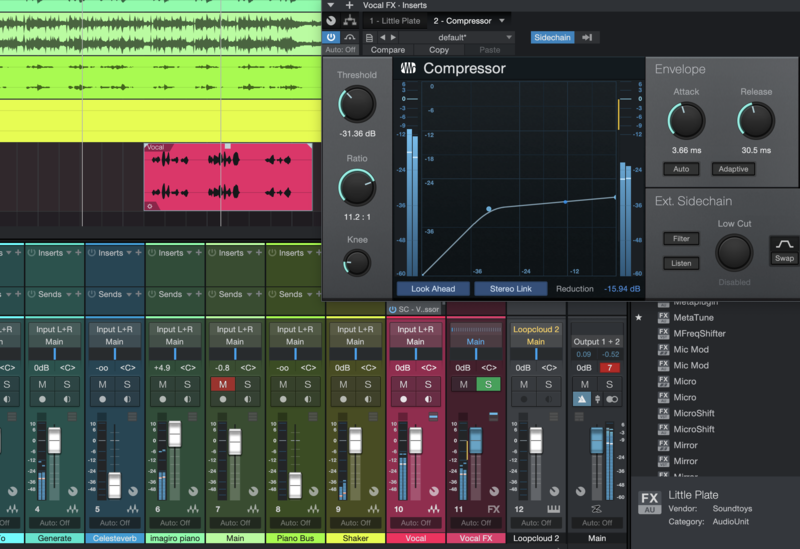
Step 1: The most usual way to do this is with sidechain compression. You’ll need your effects running on a return/aux channel (or parallels, see our parallel processing tip later on for more on this).
Step 2: Next, put a compressor on the effects channel. Activate its sidechain input to trigger compression instead, and route the original vocal channel in as that sidechain.
Step 3: Use your Threshold setting to accurately trigger compression when the vocal plays, adjust the Ratio in conjunction with Threshold to get the desired amount of ducking.
Step 4: Modify the Attack and Release settings to kick the ducking in quickly (Attack) but ease it off without the Ducking being noticed (Release). If your compressor has a Hold setting, that could work even better if tuned conscientiously.
2. Get the right presence in your vocal
The musical concept of ‘Presence’ can be hard to pin down, but it usually means something that happens in the high frequencies of a vocal recording. A vocal with boosted high frequencies will usually be said to be more present, clear and intimate. But there are some things that can go wrong when upping those highs…
First, ensure that your high boosts don’t just make the vocal harsh. You can raise highs and then use a de-esser on the way out to compensate, if this is a problem.

The second problem is that you may not want the same high-frequencies appearing in your effects like reverb and delay – this could cause an unwanted build-up of highs, making things even harsher. To combat this process the vocal’s highs only after the send signal has been made, or use parallel processing (see below).
3. Improve your reverb signal
Depending on the vocal, depending on the reverb, and depending on the entire track in context, there could be anything needed to improve your reverb. Let’s look at some vocal-specific ways to get better reverb…
First, try low-passing all reverb, or even high-passing it too, keeping the effect audible in only the useful vocal frequencies and not beyond. Next, pay attention to the reverb’s stereo image across its frequency spectrum, potentially reigning in the width at low frequencies. Finally, have you tried testing reverb with a transient remover (or limiter) on the signal entering the plugin? This can help reduce the ‘noisiness’ of the reverb considerably.
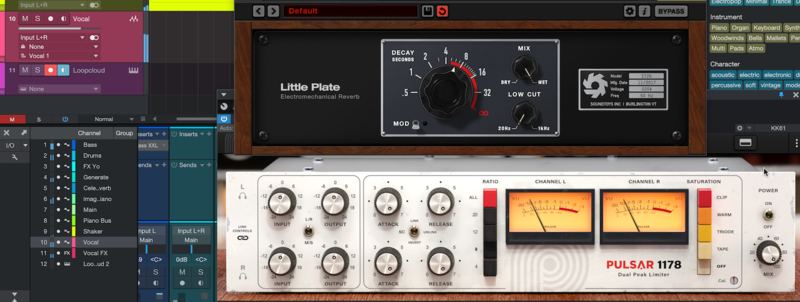
4. Go easy on tuning software
Programs like Melodyne and Auto-Tune can give results ranging from subtle correction to all-out special FX, and it’s that latter category that music has been pushing for about a decade now.
It’s essential for any producer to keep in mind the reason that vocals are so hard to get right – they’re the most human element of any track. And with the ‘perfection’ and over-engineering of tuning software, we can easily destroy that humanity. Try keeping it ‘real’ for your next job, and seeing if your singer can do justice to the humanity of music.
5. Use parallel processing techniques
Often when parallel processing is mentioned, it comes up in the context of parallel compression, where a producer will create an over-compressed channel to blend in slowly with the original. We’re going a little beyond that for this technique…
By duplicating the channel or using routing, you can split your vocal into multiple channels essentially carrying the same original signal. Full parallel processing means that for each effect you want to add, you do so on a dedicated channel, with processing set to 100% wet, and use the faders of all channels to mix in the blend you’re after.
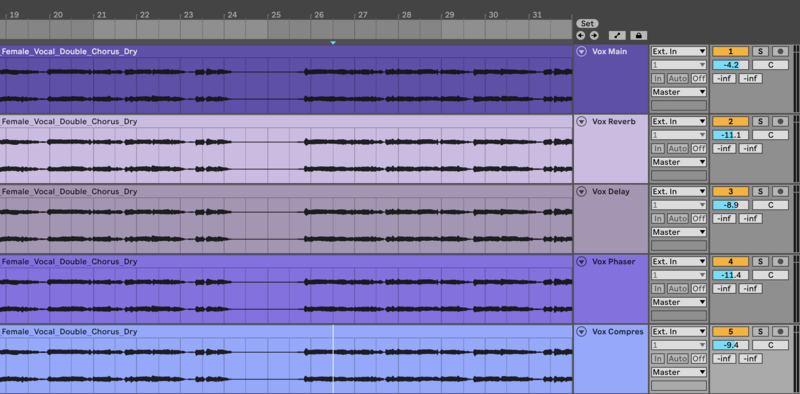
This method gives you more control in creating effects in isolation, but it can be more complicated to keep track of and command than traditional processing. Some of the tricks suggested in this article are easier and more effective in a parallel processing setup.
6. Boost your vocal with serial compression
Serial compression is a technique for compressing signals with more dynamic variation. There are often two distinct reasons to use a compressor: to tame spiky peaks and to add a sense of character. With serial compression, you admit that no one tool can do both jobs and still be good at each.
Instead, serial compression starts by using one compressor (or limiter) with fast Attack and Release times to tame transients (thanks to a high Threshold and high Ratio). That’s followed by a ‘character compressor’ with lower threshold and ratio, and slower attack and release, to add character to the calmed-down signal.
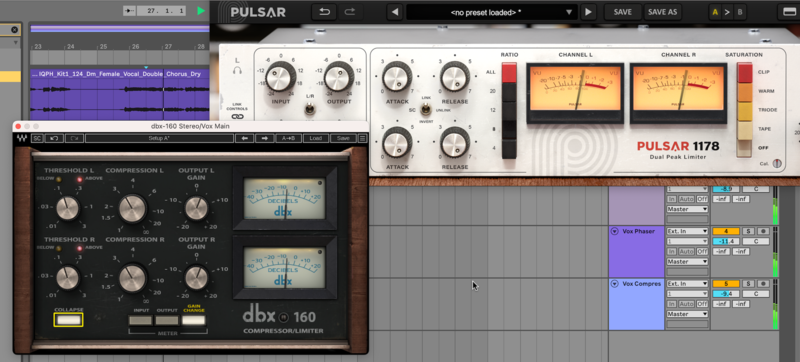
Serial compression works extra-well on vocals, piano and guitar – all instruments with a large dynamic range.
7. Do you actually need to de-ess?
No vocal guide is complete without a boring description of the boring de-esser. These devices are useful, sure, but do you actually need one every time?
If the vocal comes out of the box sounding great – as all vocals on Loopcloud do – then there’s a lot less chance you’ll need to de-ess. Also when going for an intimate, close-up feel, the extra hiss can be part of the charm – within reason.
Often, a de-esser will indeed be necessary to get your vocals right, but we wanted to raise awareness and make you think before grabbing one on auto-pilot.
8. The chorus/delay/reverb chain
These three effects are currently bread-and-butter when it comes to vocal production. The chorus comes first, adding some character to the voice. The Delay – which may be in parallel – adds a sense of timing and effect, customised to your liking. The reverb then adds the usual sense of space after either or both the chorus and delay..
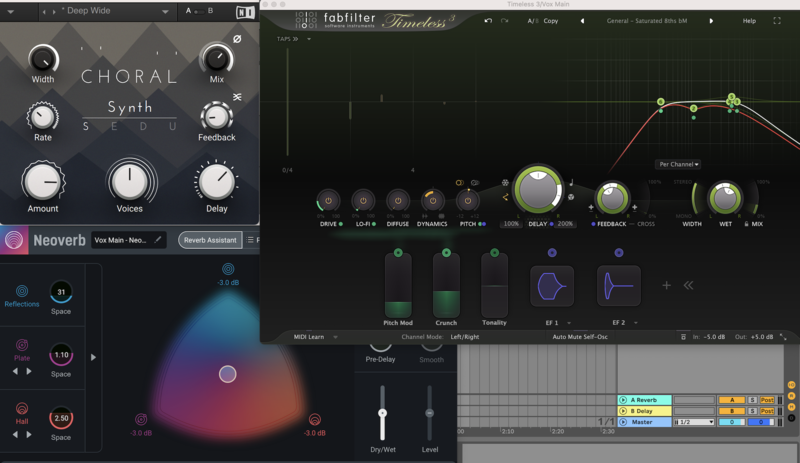
While we know these effects on their own, its their use a trio for vocals where we really have to recommend trying them – especially if you’re setting them up in parallel.
9. Three tips for backing vocals
Tip 1: Process backing vocals as a group before zooming in on any individual channels. It’s most likely that any process needed by one channel (EQ, reverb) will be needed by others too, and treating backing vocals as a group will only make them more cohesive.
Tip 2: Try using a fast compressor or limiter to whip the transients off backing vocals. Similar to the tip for reverb mentioned above, removing transients from background elements helps them to blend in smoothly and will make any timing differences less apparent.
Tip 3: You can usually be more creative with panning for backing vocals. Spread them around the stereo field more, and try stereo effects such as chorus to set them apart.
Fuel your vocal production with the 'Vocal Gems Essential Bundle'
You can grab our Vocal Gems Bundle today and snag three top-notch vocal sample packs from Vital Vocals, SHARP, ODD SMPLS for just £20, saving you a whopping £40! Transform your productions with enchanting melodies and lovely vocals across various genres.


